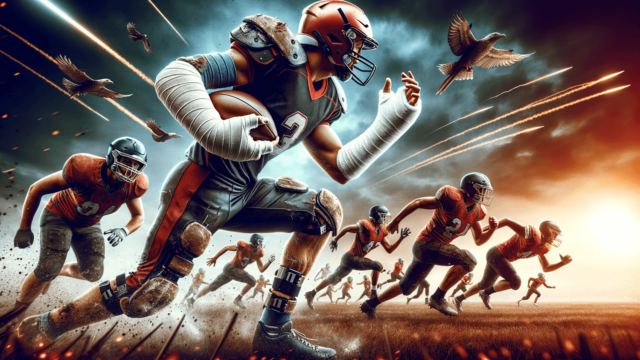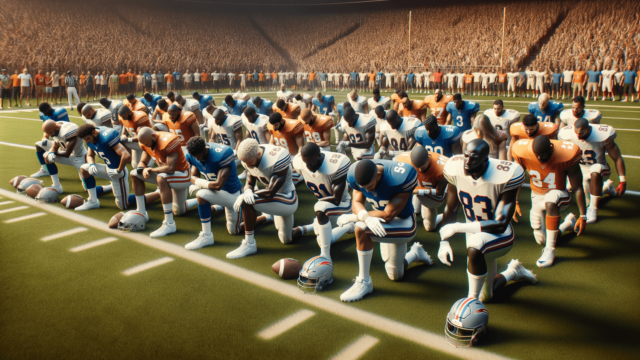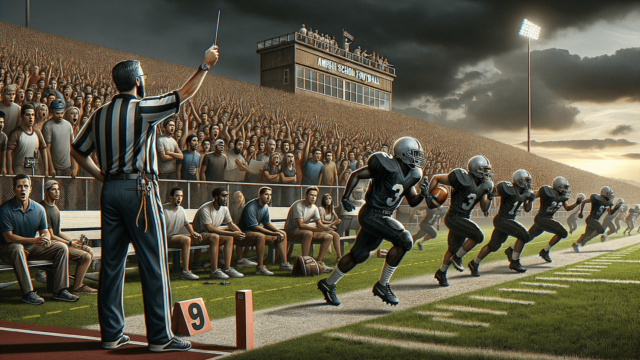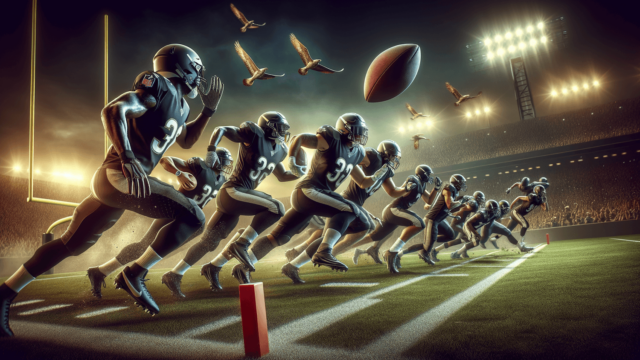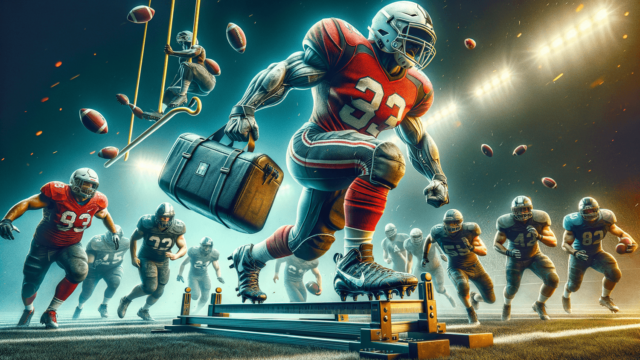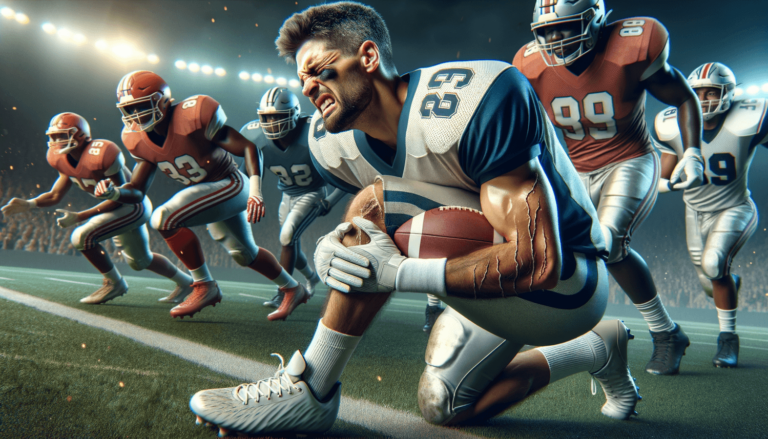
No, you should not play football with a torn ACL, as it can cause further damage, instability, and potentially lead to more serious injuries. Consult a medical professional for proper treatment and rehabilitation before attempting to resume playing.
Understanding ACL Injuries in Football
The Anterior Cruciate Ligament (ACL) is one of the key ligaments that stabilize the knee joint. When the ACL is torn, it can cause serious pain and limit your ability to perform activities that involve pivoting, change of direction and jumping – all essential in football.
Causes of ACL Tears
ACL tears usually occur during sudden twisting motions, awkward landings, or collisions. Some common scenarios include planting the foot and attempting to change direction quickly, landing from a jump, or being tackled.
Dangers of Playing Football with a Torn ACL
Risk of Further Injuries
Playing football with a torn ACL increases the risk of further damage to other knee structures, such as the cartilage, meniscus, and surrounding ligaments. Continuation of high-stress activities on an unstable knee joint can lead to long-term issues, and a higher chance of developing osteoarthritis.
Instability and Compromised Performance
An unstable knee due to a torn ACL may lead to buckling episodes or giving way, affecting your performance and ability to execute football-specific tasks, such as maintaining balance, sprinting, and changing directions.
Managing an ACL Injury
Immediate Treatment
When an ACL tear is suspected, follow the RICE (Rest, Ice, Compression, and Elevation) protocol for 24-48 hours. Limit weight-bearing activities and consult with a medical professional for a proper diagnosis and evaluation.
Rehabilitation and Long-term Management
Treatment and rehabilitation of an ACL injury depend on the severity of the tear, goals, risk factors, and the presence of associated injuries. Many factors influence the decision for non-surgical management or ACL reconstruction surgery. Both options require a comprehensive rehabilitation program focusing on improving strength, flexibility, and neuromuscular control to restore function and prevent future knee injuries.
When Can You Return to Football?
Returning to play after an ACL injury is a subjective and individual decision that depends on your physical readiness, confidence, and medical clearance from your doctor, surgeon, or physical therapist. Generally, the timeline ranges from 6 to 12 months, depending on the nature of the injury, treatment approach, and adherence to the rehab program.
Preventing ACL Injuries in Football
Understanding the risk factors associated with ACL injuries can help you take measures to prevent them. Some steps to reduce the risk of ACL injuries include:
Strength Training
Focus on strengthening the muscles around the knee, such as quadriceps, hamstrings, glutes, and calf muscles, to improve joint stability and overall performance.
Flexibility and Mobility
Stretching and maintaining proper flexibility in the muscles surrounding the knee joint, particularly the hamstrings and quadriceps, are vital for reducing the risk of knee injuries.
Neuromuscular Training
Incorporate neuromuscular training exercises that target balance, proprioception, and agility to improve the body’s ability to respond to rapid changes in direction and force during football activities.
Proper Technique
Cultivate proper technique and mechanics, especially while performing maneuvers that involve rapid changes of direction, jumping, and landing. This includes learning how to efficiently decelerate, pivot, and absorb landing forces.
Potential Complications after an ACL Injury
Although ACL injuries are manageable, potential complications may arise during the recovery process, including:
Re-Injury
Returning to sports too soon or without proper rehabilitation can result in a re-tear of the reconstructed ACL or the opposite knee’s ACL.
Knee Stiffness
Fibrosis or scarring in the knee joint can lead to decreased range of motion and reduced function, affecting performance and joint health.
Infection
Although rare, post-surgery infections may occur, potentially requiring additional treatment.
Support During Recovery
Recovery from an ACL injury can be a long and challenging process. It’s important to surround yourself with a strong support system, including your healthcare team, coaches, family, and fellow players to maintain motivation and continue working toward your goal of returning to football.
FAQ: Frequently Asked Questions About Playing Football with a Torn ACL
Now that you’ve gained vital information about ACL injuries in football, here are answers to some frequently asked questions that can help you increase your understanding and make informed decisions regarding your injury.
How is an ACL tear diagnosed?
An ACL tear is diagnosed through a combination of medical history, physical examination, and imaging tests such as X-rays, Magnetic Resonance Imaging (MRI), and sometimes Diagnostic Arthroscopy. A physician assesses the knee’s stability and checks for swelling, range of motion, and signs of joint damage.
Can an ACL tear heal without surgery?
Partial ACL tears, particularly in non-athletes or low-demand activities, may sometimes heal without surgery through physical therapy and rehabilitation. However, complete ACL tears usually require surgical intervention, particularly in athletes and active individuals, to restore knee stability and functional capabilities.
What is the success rate of ACL reconstruction surgery?
ACL reconstruction surgery has a high success rate, with approximately 80-90% of patients returning to their previous level of sports participation. The outcome largely depends on the patient’s adherence to their rehabilitation program, the quality of surgical technique and the absence of complications.
When can I start jogging after an ACL injury or surgery?
The timeline for resuming jogging after an ACL injury or surgery varies depending on the individual’s progress in the rehabilitation program and medical advice. Generally, jogging can begin around 12 weeks post-surgery or after satisfactory achievements in the rehab program, such as regaining adequate quadriceps strength, knee stability, and range of motion.
Do braces help prevent ACL injuries?
Knee braces may provide additional support to the knee joint. However, the effectiveness of braces as a preventive measure for ACL injuries is inconclusive. While some studies suggest braces can reduce the risk, others report no significant benefits. It’s essential to prioritize proper training, strength building, and movement mechanics for injury prevention.
Featured Posts
- No pillar pages found.
